Chai Style Art: Kim Jackson’s Eclectic Art Inspired by South Africa
Kim Jade Jackson’s art and design work is multilayered, robust and confident.
After 37 years with the Atlanta Journal-Constitution and now with the AJT, , Jaffe’s focus is lifestyle, art, dining, fashion, and community events with emphasis on Jewish movers and shakers.
Recycling, intimacy, science, sex and nature are just a few of the subjects of Kim Jade Jackson’s original, often large-scale paintings. “My work erupts biologically,” Jackson says. “This is pure knowledge that we cannot escape — our very nature. We are all human, connecting and attaching in molecular ways paralleling the building blocks of science on a cellular level.”
On canvas, Jackson strives to capture all of this as “a dance connecting humans in extreme love and grace across time and space.”
Her garage studio is full of parts and pieces that represent everything from amoebas reproducing to racial tensions in South Africa to Saguaro cacti. Her works have intriguing titles like “The Way We Lay” (2018). “I paint to rediscover myself as a contemporary visual artist awakened from the backward gift of the COVID virus,” she says. “It reminds us of who we truly are. We cannot escape our nature.”
Mother of a teenager and married to commercial real estate investor and developer Dion Meltzer, the super-talented Jackson can be spotted on Roswell Road, Manhattan, Paris or London on any given day.
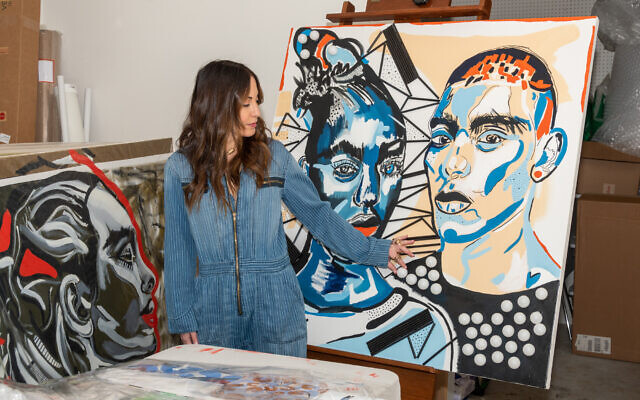
Jaffe: You’ve been described as “philosophical and esoteric.” Describe the basis for your own art.
Jackson: Much of the activity goes on in my garage studio, as you see the huge canvasses and variety of materials. I really do not have a linear process. I may go over a piece three or four times. Most of my work is 2D, but I’m venturing into 3D, too. I don’t like to pick a lane. My latest series is founded in nature — I’m interested in evolution and where we come from at the microscopic level and beyond, into the spiritual realms. On top of some of my oil and acrylic paints, I apply all sorts of mixed media: ping-pong balls, straws and now I am experimenting with modeling clay. My larger paintings sell for around $9,000 to $11,000; I have smaller works that range from $1,200 to $2,500. Many of my limited-edition prints are affordable, about $300-$400.
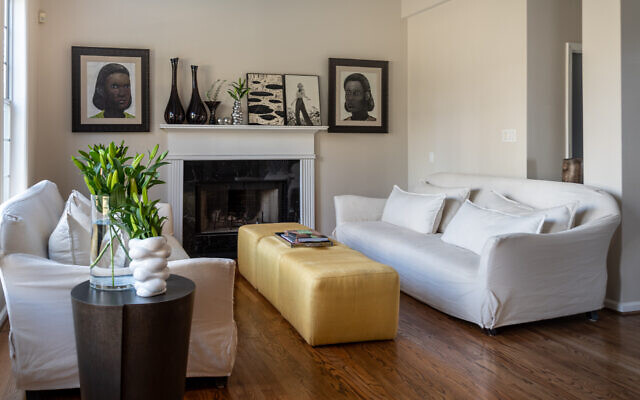
Jaffe: Which works of others do you treasure here?
Jackson: Mostly South African artists. In the formal living room, over the mantle, is an oil painting by John Murray, Kirsten Sims and William Kentridge. Carrol Boyes, who is credited with putting South African design on the map, was my stepmother. I was the creative director of her brand for nine years, but since her death in 2019, I have been pursuing new art, creating and consultancy roles. The Carrol Boyes home décor brand originated in Cape Town and can be found in over 30 countries and 24 stores, known for functional art with a sense of humor and surprises like seeing a human figure as a pitcher handle. My kitchen displays many of her pieces.
Jaffe: Where does your interior design work fit in?
Jackson: I lived in London for seven years, working as a design director for Kelly Hoppen, who has links to the British royal family. There I designed the first-class cabins for British Airways and directed photoshoots of vast interiors around Europe. Neiman Marcus carried many of our products. After some burnout, I segued into contemporary painting, as my foundation was in fine arts. I am now consulting for a Paris-based interior design firm evolving a new brand, which is my passion. I love seed development projects. I will occasionally commute to France as I work on a new atelier and range of products. My art will also be featured in the brand’s showroom.
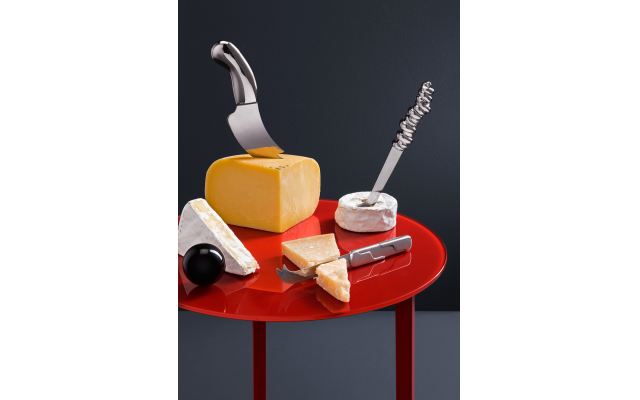
Jaffe: How has your South African background influenced your work?
Jackson: I was born in Cape Town, graduated from university with distinction with a BFA, majoring in design also there. I spent some good years in London, which is why my “accent” has more of a “clip.” My father’s family came from Eastern Europe and my mother’s family came from London and Germany and sold their business just before WWII to flee to Amsterdam, while some went to New York City. There is always “Africa” in me, which influences my work in an intimate way and also surfaces in my home aesthetic. I come from a lineage of artists.
Jaffe: Your “Tikkun Olam” project benefits South African craftspeople?
Jackson: I’m on the board of Monkeybiz, which empowers Black women living in the poorest regions of Cape Town who produce work that has sold at Sotheby’s and been heralded and endorsed by celebrities like Donna Karan, Annie Lennox and the late Archbishop Desmond Tutu. COVID has presented an additional challenge in exporting these goods, along with declining tourism to South Africa. Their beadwork is tied to the ancient South African tradition of meticulous embroidery-like beading. My black-and-white beaded poodle in the den is created by a collectible bead artist.
Jaffe: You recently had a show at the Brooklyn Art Fair for Emerging Artists. How did that unfold?
Jackson: The response to my show in New York was incredible; and a big collector purchased my work. It was always a dream to show there, and my goal is to find a gallery there to represent me. New York is a city that continues to inspire me.
- Marcia Caller Jaffe
- Chai Style
- art
- Chai Style Art
- Kim Jade Jackson
- Paris France
- Howard Mendel
- John Murray
- Kirstin Sims
- London England
- glass artist
- Anthony Stern
- Carrol Boyes
- Covid Virus
- racial tensions
- South Africa
- Saguaro cacti
- visual artist
- Dion Meltzer
- Kirsten Sims
- William Kentridge
- South African design
- Cape Town
- British Royal Family
- Kelly Hoppen
- British Airways
- europe
- Neiman Marcus
- Eastern Europe
- Germany
- World War II
- Amsterdam
- New York City
- Africa
- Tikkun Olam
- Monkeybiz
- Black women
- Sotheby’s
- Donna Karan
- Annie Lennox
- Archbishop Desmond Tutu
- COVID



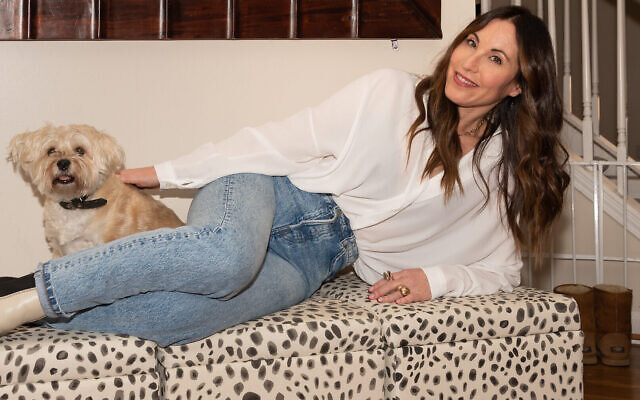
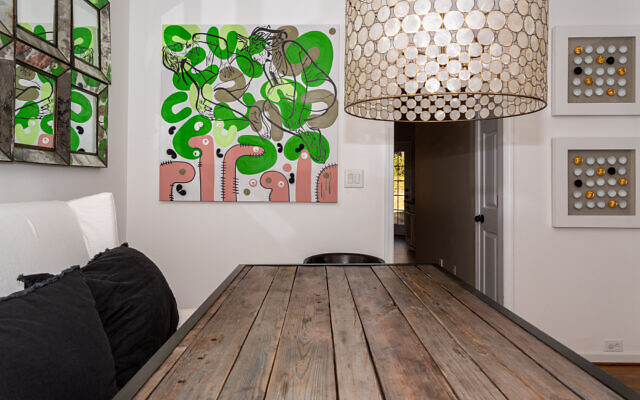
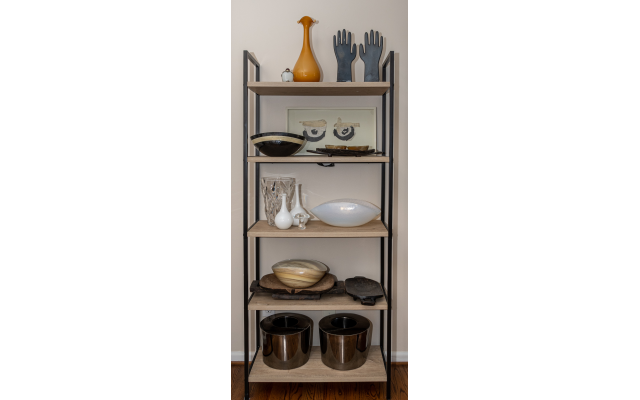
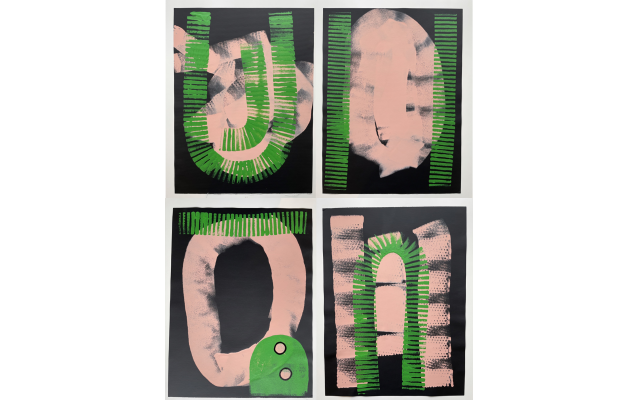
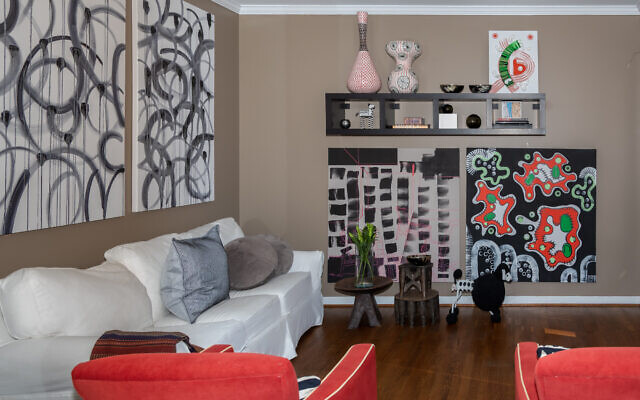
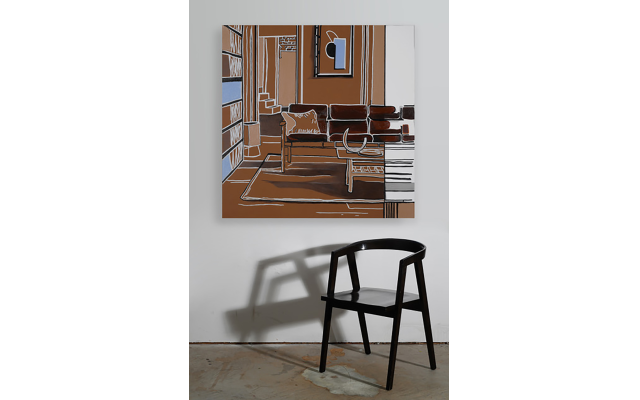
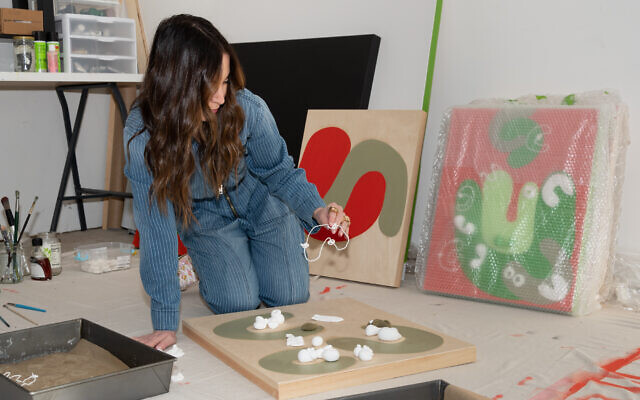
comments